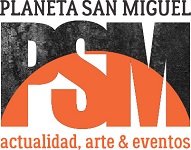By Pancho Peyo T.
For or Against?
The arrival of large retail chains like Home Depot to midsize cities with strong cultural identities—such as San Miguel de Allende and Valle de Bravo—has reignited the debate between economic development and the preservation of social fabric. This phenomenon, observable across Mexico, takes on unique nuances in towns where tourism and tradition are economic pillars.
Economic Impact: Jobs vs. Inequality
According to INEGI studies, department stores generate up to 12% more formal jobs in cities with fewer than 500,000 inhabitants. However, ECLAC warns that 60% of these positions are temporary or minimum-wage roles.
In contrast, research from the University of Guanajuato shows that for every department store that opens, 3 to 5 small businesses close within a 2 km radius, particularly in sectors like textiles and food. San Miguel de Allende—where 38% of the economy relies on tourism—is a paradigmatic case: its famed ceramic and textile workshops face growing pressure from department stores like this.
Urban Transformation: Gentrification and Social Shifts
A 2023 study by the Guanajuato government revealed that shopping centers in outskirts of cities under 250,000 residents have:
Increases land value by 20% in 3 years.
Causes traffic jams in areas not designed for this kind of traffic.
In Valle de Bravo, local architects noted that “Pueblo Mágico” regulations have so far prevented multinational chains from entering historic centers—though real estate pressure grows in surrounding areas.

Tourism: Cultural Appeal vs. Modern Convenience?
Data from Mexico’s Tourism Ministry highlights a paradox:
65% of international visitors to San Miguel seek “authenticity”.
Yet 48% of domestic tourists prefer malls with familiar brands.
This dual demand calls for differentiated policies. Programs like “Hecho en San Miguel” (Made in San Miguel), which promotes artisan workshops, suggest smart regulation can enable coexistence.
Toward a Hybrid Model
Experts propose three strategies, inspired by successes like Tequila, Jalisco:
Strict commercial zoning: Limit chains to non-historic areas.
Differentiated taxes: Use revenue from big-box stores to fund small-business grants.
Implement authenticity seals: Like Valle de Bravo’s label for locally made products.
Final Reflection
The challenge isn’t to reject modernity but to tame it. As Mexican writer Carlos Monsiváis wrote: “Progress that destroys our roots is a mirage of development.” These cities have the chance to write a new chapter in Mexico’s urban history—one that balances growth and identity.











